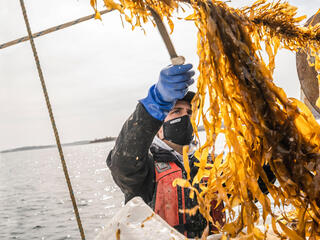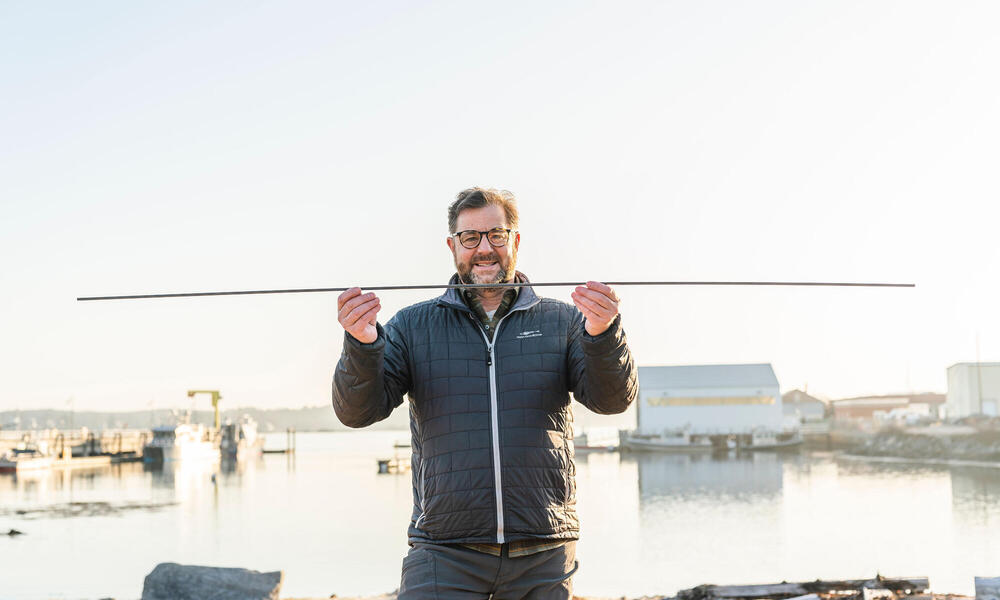Seaweed is easy to grow, versatile, and beneficial to ocean ecosystems. Farming seaweed is an efficient way to produce highly nutritious food for a growing population. Unlike terrestrial crops, seaweed doesn’t require fertilizer, pesticides, freshwater, or land, and it grows rapidly—some marine algae can be ready to harvest in as little as six weeks. It acts as an underwater forest that absorbs carbon, nitrogen, and phosphorus, making it a valuable tool to fight climate change and a water purifier, while also creating new habitat for a diversity of marine life.
Seaweed production has grown to over 35 million tons, more than doubling in the last decade. Packing a nutritional punch of minerals, amino acids, and iodine, it is used in both human and animal food, and can be found in a variety of medicine and beauty products, biofuels, and packaging.
China, Indonesia, and the Philippines lead the world in volume of production, but seaweed farming can be found in many countries, including Tanzania, Sweden, Chile, and the United States. Most farms operate in shallow coastal waters, competing for space with fishers and other uses. Technology to farm sustainably in harsher ocean conditions is newly developing. WWF is working to grow this industry to bring the benefits of seaweed farming for nature, people, and climate to scale.






